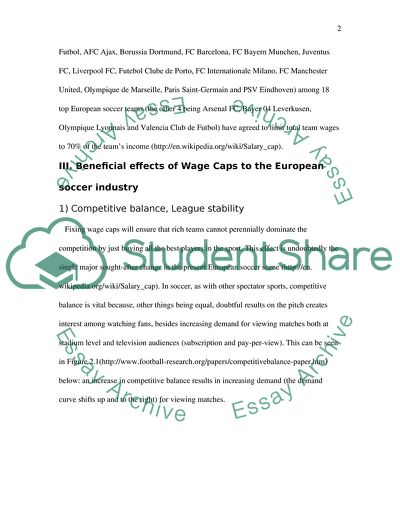Cite this document
(The Soccer Industry in Europe Assignment Example | Topics and Well Written Essays - 3250 words, n.d.)
The Soccer Industry in Europe Assignment Example | Topics and Well Written Essays - 3250 words. https://studentshare.org/sports-and-recreation/1705245-how-will-wage-capping-affect-the-soccer-industry-in-europe-and-the-soccer-transfer-market
The Soccer Industry in Europe Assignment Example | Topics and Well Written Essays - 3250 words. https://studentshare.org/sports-and-recreation/1705245-how-will-wage-capping-affect-the-soccer-industry-in-europe-and-the-soccer-transfer-market
(The Soccer Industry in Europe Assignment Example | Topics and Well Written Essays - 3250 Words)
The Soccer Industry in Europe Assignment Example | Topics and Well Written Essays - 3250 Words. https://studentshare.org/sports-and-recreation/1705245-how-will-wage-capping-affect-the-soccer-industry-in-europe-and-the-soccer-transfer-market.
The Soccer Industry in Europe Assignment Example | Topics and Well Written Essays - 3250 Words. https://studentshare.org/sports-and-recreation/1705245-how-will-wage-capping-affect-the-soccer-industry-in-europe-and-the-soccer-transfer-market.
“The Soccer Industry in Europe Assignment Example | Topics and Well Written Essays - 3250 Words”. https://studentshare.org/sports-and-recreation/1705245-how-will-wage-capping-affect-the-soccer-industry-in-europe-and-the-soccer-transfer-market.


